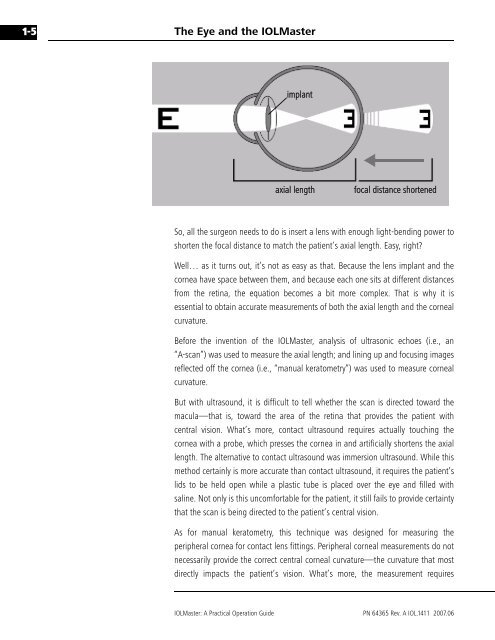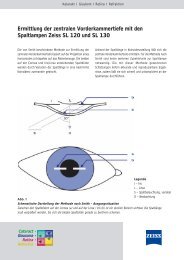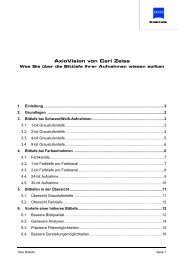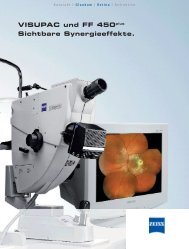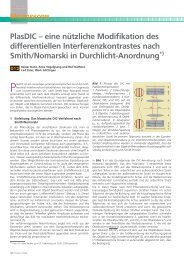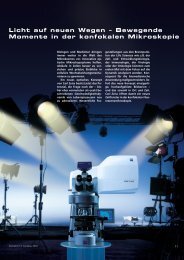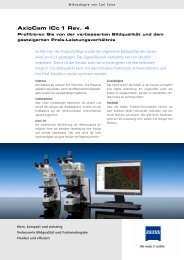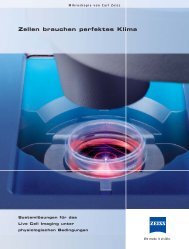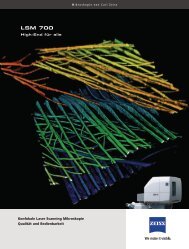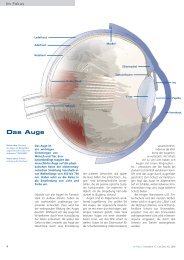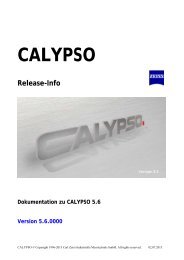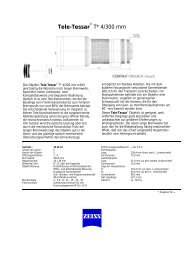IOLMaster - A Practical Operation Guide - Carl Zeiss
IOLMaster - A Practical Operation Guide - Carl Zeiss
IOLMaster - A Practical Operation Guide - Carl Zeiss
You also want an ePaper? Increase the reach of your titles
YUMPU automatically turns print PDFs into web optimized ePapers that Google loves.
1-5The Eye and the <strong>IOLMaster</strong>implantDRAFT/PRE-RELEASE/CONFIDENTIAL4/23/07axial lengthfocal distance shortenedSo, all the surgeon needs to do is insert a lens with enough light-bending power toshorten the focal distance to match the patient’s axial length. Easy, right?Well… as it turns out, it’s not as easy as that. Because the lens implant and thecornea have space between them, and because each one sits at different distancesfrom the retina, the equation becomes a bit more complex. That is why it isessential to obtain accurate measurements of both the axial length and the cornealcurvature.Before the invention of the <strong>IOLMaster</strong>, analysis of ultrasonic echoes (i.e., an“A-scan”) was used to measure the axial length; and lining up and focusing imagesreflected off the cornea (i.e., “manual keratometry”) was used to measure cornealcurvature.But with ultrasound, it is difficult to tell whether the scan is directed toward themacula—that is, toward the area of the retina that provides the patient withcentral vision. What’s more, contact ultrasound requires actually touching thecornea with a probe, which presses the cornea in and artificially shortens the axiallength. The alternative to contact ultrasound was immersion ultrasound. While thismethod certainly is more accurate than contact ultrasound, it requires the patient’slids to be held open while a plastic tube is placed over the eye and filled withsaline. Not only is this uncomfortable for the patient, it still fails to provide certaintythat the scan is being directed to the patient’s central vision.As for manual keratometry, this technique was designed for measuring theperipheral cornea for contact lens fittings. Peripheral corneal measurements do notnecessarily provide the correct central corneal curvature—the curvature that mostdirectly impacts the patient’s vision. What’s more, the measurement requires<strong>IOLMaster</strong>: A <strong>Practical</strong> <strong>Operation</strong> <strong>Guide</strong> PN 64365 Rev. A IOL.1411 2007.06


